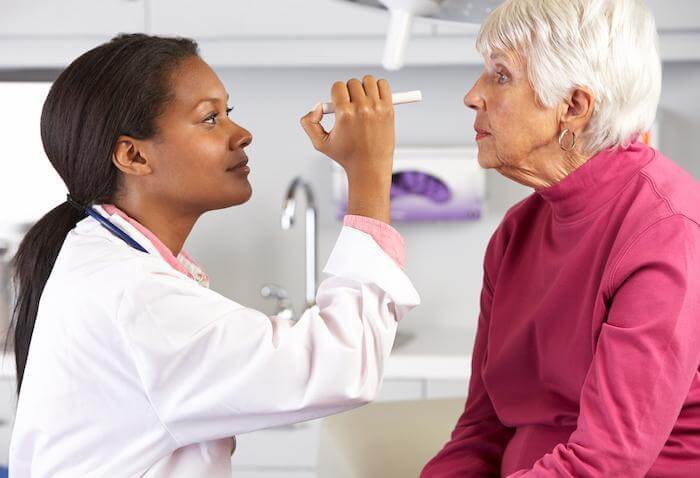
Whether you have type 1 or type 2 diabetes, you need to pay attention to your eye health. The changes to your circulatory system caused by the high levels of blood sugar that accompany diabetes can take a toll on your eyes, a condition called diabetic retinopathy. Your risk increases when high blood sugar levels continue over long periods of time or are poorly controlled.
Lack of symptoms
As diabetic retinopathy develops, you may be completely unaware. In its early stages, there are few noticeable symptoms. You may have minor vision changes that you attribute to getting older, or no symptoms at all. That’s why, if you know you have diabetes, regular eye screening is an important part of your health management regimen.
Increasing the risk
There are other factors that, when combined with high blood sugar, can raise your risk of vision problems. In addition to the length of time you’ve had uncontrolled diabetes and how well you control your blood sugar levels, these risk factors include:
- Tobacco consumption
- Hypertension, also known as high blood pressure
- High cholesterol levels
- Pregnancy
- Belonging to high-risk ethnic groups including Hispanic, African-American, or Native American
What to expect at a diabetic eye exam
Tests for diabetic retinopathy take about 30 minutes. Because diabetes increases your risk of glaucoma and cataracts as well as retinopathy, your doctor screens for these and certain other eye conditions. This is an important step, because any of these can lead to blindness without treatment.
Your retinopathy screening starts with eye drops that cause your pupils to dilate so the doctor can take diagnostic photographs of your retinas. The camera is close, but it won’t touch your eye. You’ll see bright flashes with every photo. This may be startling, but few find it uncomfortable.
The eye drops take about 15 minutes to have an effect, and your vision becomes blurry. This is normal, and the effects of the drops can last between two to six hours. You won’t be able to drive home, so bring a friend or family member to drive you or arrange for other transportation.
Because your pupils are dilated, you’ll likely be more sensitive to light while the eye drops are active. Bringing a pair of sunglasses may make your trip home more comfortable.
After your exam
It typically takes about six weeks for the results of your exam to return. Your diagnostic photos will be examined by several health care professionals, including specialists in diagnosing and grading retinopathy. You’ll receive one of three diagnoses:
- No indication of retinopathy
- Stage one or background retinopathy
- Referable retinopathy
The first two stages don’t require action other than testing again in a year’s time. The last stage means you’ll likely need further assessment of your diabetic retinopathy condition to develop a treatment plan.
The eye care professionals at Whitson Vision are diabetic exam specialists. Not only can they check and assess your vision, they can guide you through the vision-related aspects of your diabetes management efforts. You can call either office or use the online booking tool to arrange your diabetic retinopathy exam today.
